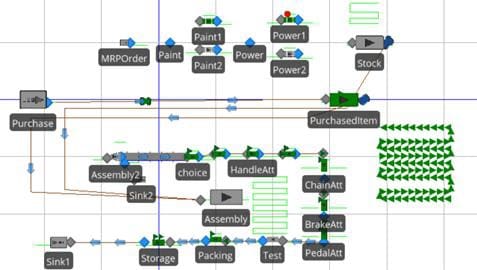by Wenhe Yang, Kentaro Kuwahara, Soemon Takakuwa
As presented at the 2019 Winter Simulation Conference
Demand-driven material requirements planning (DDMRP) is considered as an effective method to help enterprises plan and manage inventories and materials, and it addresses the challenges of the increasing variability and complexity in the current market environment. Herein, a simulation model of a bicycle assembly company was constructed to verify and evaluate the DDMRP benefits, for implementing experiments that consider variability.
Introduction
Since the 1970s, material requirements planning (MRP) has been widely used as a planning method and tool for controlling the inventory, production, and scheduling in most mid-range and large manufacturing companies worldwide (Ptak and Smith 2011). In the current market environment, however, the increasing customization of products requires that the systems handle higher numbers of product variants, as well as smaller lot sizes, thereby making it greatly difficult for traditional planning systems to cope with these uncertain situations and to keep the inventory (material, intermediate products, and final products) at an appropriate level. To address these challenges, demand-driven MRP (DDMRP) has been developed to aid in the planning and management of inventories and materials, as well as to promote better and quicker decisions and actions at the planning and execution levels (Ptak and Smith 2011). In this study, the effectiveness of conducting DDMRP is verified and evaluated through the simulation model of a bicycle assembly company, which provides a comparison of its performance to that of the traditional planning method.



